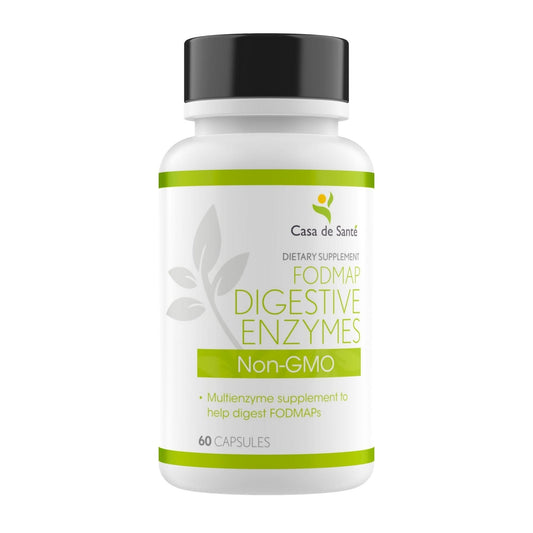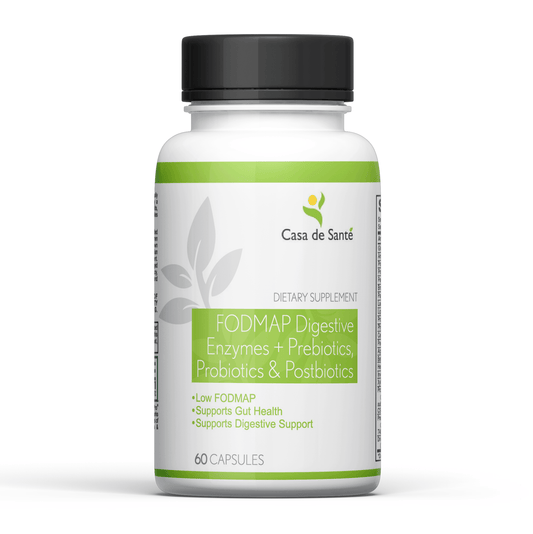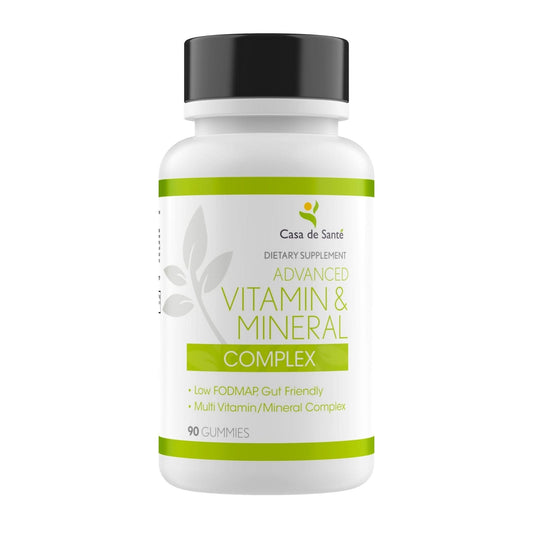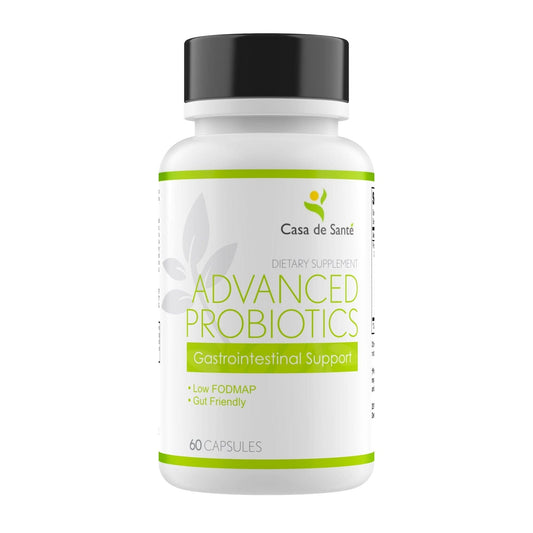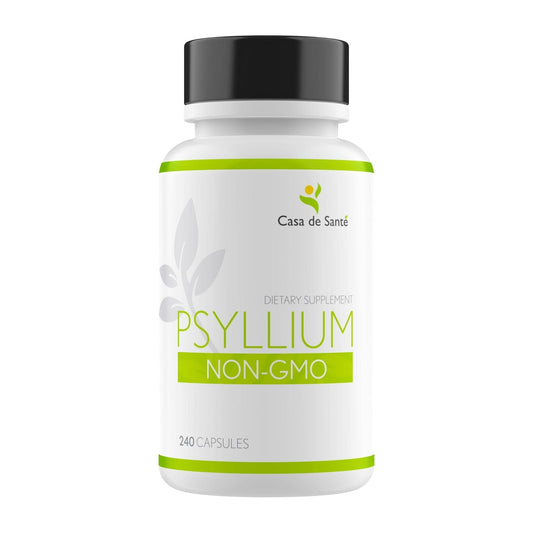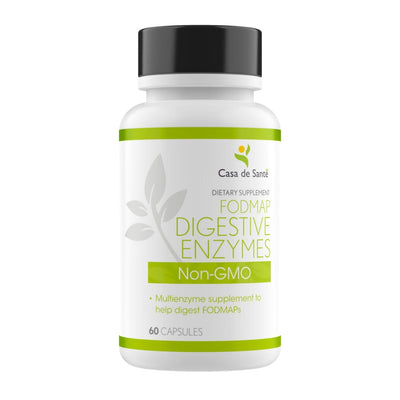The Ultimate Low FODMAP Diet Plan for IBS: A Comprehensive Guide to Relief and Wellness
If you've been dealing with IBS, you know how challenging it can be to find relief. The low FODMAP diet plan for IBS might be the answer you've been looking for. This guide will walk you through what the diet is all about, what foods to eat and avoid, and how to create a meal plan that works for you. Let's dive into the world of low FODMAP and discover a path to feeling better.
Key Takeaways
- The low FODMAP diet can help manage IBS symptoms by reducing certain carbs that cause gut issues.
- It's important to know which foods are low and high in FODMAPs to make informed choices.
- Creating a balanced meal plan involves including a variety of low FODMAP foods.
- Consulting with a dietitian can provide personalized guidance for following the diet.
- Tracking symptoms and progress helps in understanding what works best for your body.
Understanding the Low FODMAP Diet Plan for IBS
What is the Low FODMAP Diet?
The Low FODMAP diet is a structured eating plan designed to help people with IBS manage their symptoms. FODMAPs are short-chain carbohydrates that some folks can't digest properly. When these carbs make their way to the large intestine, they can cause bloating, gas, and pain. Imagine cutting out certain foods to see which ones are the troublemakers—that's basically what this diet is about. You eliminate high-FODMAP foods and then slowly reintroduce them to pinpoint what your gut can't handle.
How the Low FODMAP Diet Works
This diet isn't something you jump into without a plan. It's a three-step process:
- Elimination: Start by cutting out all high-FODMAP foods. This gives your gut a break and helps establish a baseline.
- Reintroduction: Gradually bring back FODMAP foods, one at a time. Keep track of any symptoms like bloating or cramping to identify triggers.
- Personalization: With the help of a healthcare provider, create a diet that avoids your triggers but includes as many foods as possible.
A nutrition assessment can be super helpful here. It helps tailor the diet to your specific needs, ensuring you're not missing out on essential nutrients.
Benefits of the Low FODMAP Diet
The main perk of this diet is symptom relief. For many, it can significantly reduce the discomfort associated with IBS. Here's what people often notice:
- Less bloating
- Reduced abdominal pain
- Better bowel regularity
Following a Low FODMAP diet can feel like getting your life back. When your stomach isn't constantly arguing with you, you can focus on the things you love without interruption.
Foods to Include and Avoid in a Low FODMAP Diet
Low FODMAP Foods to Enjoy
Following a low FODMAP diet doesn't mean you have to miss out on delicious foods. There are plenty of tasty options that won't upset your stomach. Here's a list of some low FODMAP foods you can enjoy without worry:
- Fruits: Bananas, blueberries, and strawberries are great choices. You can also snack on grapes and kiwi.
- Vegetables: Carrots, cucumbers, and spinach are safe bets. You can also enjoy potatoes and zucchini.
- Proteins: Chicken, beef, and fish like salmon are all good. Eggs and tofu are also on the menu.
- Grains: Rice, quinoa, and oats are your friends here. You can have gluten-free bread and pasta too.
High FODMAP Foods to Limit
There are certain foods that can trigger symptoms and should be limited or avoided. These foods are high in FODMAPs and might cause discomfort.
- Fruits: Apples, pears, and mangoes are off the list. Avoid watermelon and stone fruits like cherries.
- Vegetables: Onions, garlic, and cauliflower can be troublesome. Steer clear of mushrooms and asparagus.
- Dairy: Milk, soft cheeses, and yogurts with lactose can be problematic. Opt for lactose-free options instead.
- Legumes: Beans and lentils often cause issues. If you must, try canned versions as they're lower in FODMAPs.
Tips for Grocery Shopping
Navigating the grocery store can be tricky when you're following a low FODMAP diet. Here are some tips to make your shopping trips easier:
- Plan Ahead: Make a list of low FODMAP foods before you go. This helps you avoid impulse buys that might not be stomach-friendly.
- Read Labels: Check for hidden FODMAPs in packaged foods. Ingredients like high fructose corn syrup are red flags.
- Buy Fresh: Stick to the outer aisles where fresh produce, meats, and gluten-free grains are usually found.
Sticking to a low FODMAP diet can feel challenging at first, but with a little planning and the right choices, you'll find it becomes second nature. Your gut will thank you for it!
Creating a Balanced Low FODMAP Meal Plan
Sample Low FODMAP Breakfast Ideas
Starting your day with a low FODMAP breakfast can set a positive tone. Here are some ideas that are both satisfying and gentle on your stomach:
- Oatmeal Delight: Cook up some gluten-free oats with almond milk. Top with slices of banana and a dash of cinnamon.
- Egg and Spinach Wrap: Use a gluten-free tortilla, fill it with scrambled eggs, fresh spinach, and a sprinkle of feta cheese.
- Smoothie Bowl: Blend lactose-free yogurt with strawberries and a handful of blueberries. Pour it into a bowl and top with chia seeds.
Lunch and Dinner Recipes
Crafting low FODMAP lunches and dinners doesn't have to be a chore. Here are a few recipes that are not only easy to make but also tasty:
- Grilled Chicken Salad: Toss grilled chicken breast with mixed greens, cherry tomatoes, and a drizzle of olive oil and lemon juice.
- Quinoa Stir-Fry: Sauté bell peppers, carrots, and zucchini in sesame oil. Mix in cooked quinoa and a splash of soy sauce.
- Baked Salmon: Season salmon fillets with herbs, bake, and serve with a side of steamed green beans.
Snacks and Desserts
Even on a low FODMAP diet, you can enjoy snacks and desserts. Here are some options that won't upset your tummy:
- Rice Cakes with Peanut Butter: Top rice cakes with a thin layer of peanut butter and slices of banana.
- Fruit Salad: Mix together diced pineapple, kiwi, and strawberries for a refreshing treat.
- Dark Chocolate Squares: A couple of pieces of dark chocolate can be a delightful end to your meal.
Remember, the key to a successful low FODMAP meal plan is variety. By mixing and matching different foods, you can create delicious meals that won't trigger IBS symptoms. Don't be afraid to experiment and find what works best for you!
Managing IBS Symptoms with a Low FODMAP Diet
Common IBS Symptoms
Living with IBS can feel like a rollercoaster. Some days you're okay, and others, your gut feels like it's in knots. The usual suspects include bloating, gas, and those sudden bathroom trips. It's not just about the stomach, though. Fatigue and even mood swings can tag along. These symptoms can really mess with your day-to-day life.
How a Low FODMAP Diet Alleviates Symptoms
So, how does this diet help? It's all about cutting out those pesky FODMAPs, which are types of carbs that don't sit well with everyone. By avoiding high FODMAP foods, like certain fruits, veggies, and dairy, many folks notice a big drop in their symptoms. The idea is to give your gut a break and see what foods are actually causing the trouble. It's like a detective game for your stomach!
Success Stories
You wouldn't believe the number of people who have found relief with this diet. Take Maria, for example. She used to avoid eating out because of her unpredictable gut. After sticking to a low FODMAP plan, she's back to enjoying dinners with friends without the worry. Then there's Jake, who finally feels like he has control over his body again. These stories aren't just rare cases; they're becoming more common as more people try this approach.
The low FODMAP diet isn't just a trend; it's a tool that can help you take back control over your life. It's about finding balance and understanding what your body needs.
Expert Tips for Following a Low FODMAP Diet
Consulting with a Dietitian
Starting a low FODMAP diet can feel like diving into the deep end without a float. That's why talking to a dietitian is a game-changer. They know the ins and outs of this diet and can help you figure out what works for you. They'll help you avoid common mistakes that could trip you up. Plus, they can tailor the plan to fit your lifestyle and needs, so you're not just eating rice cakes and feeling miserable.
Tracking Your Progress
Keeping tabs on what you eat and how you feel is super important. It’s like having a personal diary that tracks your tummy's mood swings. You can jot down what you eat, any symptoms you notice, and how your energy levels are. This not only helps you see patterns but also gives your dietitian a clearer picture to help tweak your plan.
- Write down meals and snacks daily.
- Note any symptoms like bloating or discomfort.
- Record your mood and energy levels.
Overcoming Challenges
Let's be real, sticking to a low FODMAP diet isn't always a walk in the park. There will be days when you just want to eat a big bowl of spaghetti. The key is to plan ahead and find low FODMAP alternatives that satisfy your cravings. Also, remind yourself why you started this journey—better health and fewer IBS flare-ups. Having a support system, like a friend or a community group, can make a huge difference.
Remember, it's about finding a balance that works for you. It's okay to have setbacks, but don't let them derail your progress.
The Science Behind FODMAPs and IBS
What are FODMAPs?
FODMAPs, an abbreviation for fermentable oligosaccharides, disaccharides, monosaccharides, and polyols, are a group of short-chain carbohydrates. These sugars are notorious for being poorly absorbed in the small intestine. When they reach the large intestine, they ferment, leading to gas and bloating. Foods like wheat, onions, garlic, and certain fruits are high in FODMAPs, making them troublesome for some people.
The Role of FODMAPs in IBS
In individuals with IBS, FODMAPs can exacerbate symptoms like bloating, gas, and abdominal pain. The fermentation process in the gut can lead to increased water and gas production, stretching the intestinal walls and causing discomfort. For some, even small amounts of high-FODMAP foods can trigger symptoms.
Research and Studies
Research has shown that a low-FODMAP diet can significantly reduce symptoms in up to 70% of people with IBS. Studies suggest that by limiting these carbohydrates, individuals can experience less bloating and pain. The diet typically starts with a strict elimination phase, followed by gradual reintroduction to identify personal triggers.
Understanding the science behind FODMAPs and their impact on IBS can empower individuals to manage their symptoms effectively. While it may seem daunting at first, many find relief through careful dietary adjustments.
Adapting the Low FODMAP Diet for Long-Term Wellness
Transitioning from Elimination to Maintenance
So, you've tackled the elimination phase of the low FODMAP diet and figured out your triggers. Now what? Transitioning to a maintenance phase is key. Think of this as the 'new normal' where you balance what you can eat with what you should avoid. It's not about being super strict anymore but finding a rhythm that works for you. Here’s how to ease into it:
- Reintroduce Foods Gradually: Start by adding foods back one at a time. This helps you pinpoint any that may cause discomfort.
- Keep a Food Diary: Jot down what you eat and any symptoms you notice. This can be a game-changer for spotting patterns.
- Listen to Your Body: Pay attention to how different foods make you feel. If something doesn't sit right, it might be best to steer clear.
Incorporating Other Dietary Needs
Life doesn’t stop at FODMAPs. You might have other dietary needs like gluten-free or vegan preferences. Integrating these into your low FODMAP plan can be a bit of a puzzle, but it's doable.
- Plan Ahead: Meal planning can help you ensure you're meeting all your nutritional needs.
- Consult a Dietitian: They can provide advice tailored to your specific dietary requirements.
- Experiment with Recipes: Try new recipes that fit both your low FODMAP and other dietary needs. You might discover some favorites!
Sustaining Gut Health
Maintaining gut health is about more than just what you eat. It's a lifestyle. Here are some tips to keep your gut happy:
- Stay Hydrated: Water aids digestion and helps maintain a healthy gut lining.
- Exercise Regularly: Physical activity can boost your digestive health.
- Manage Stress: Stress can wreak havoc on your gut, so find ways to relax, whether it's yoga, meditation, or just a good book.
Remember, the journey to gut health is personal. There’s no one-size-fits-all, and it's okay to have setbacks. The important thing is to keep moving forward and adjusting as needed.
If you're looking to make the Low FODMAP diet a part of your everyday life, visit our website for helpful tips and resources. We have everything you need to support your journey to better gut health!
Conclusion
Wrapping up, the low FODMAP diet can be a real game-changer for those dealing with IBS. It's not just about cutting out foods; it's about finding what works for you and your gut. Sure, it might seem a bit overwhelming at first, but with some patience and maybe a little help from a dietitian, you can figure it out. Remember, it's all about feeling better and taking control of your health. So, give it a shot, and see how it goes. You might just find the relief you've been looking for.
Frequently Asked Questions
What exactly is a Low FODMAP diet?
A Low FODMAP diet is a way of eating that helps people with tummy troubles like IBS. It involves avoiding certain types of carbohydrates that can be hard to digest.
How does a Low FODMAP diet help with IBS?
This diet helps by reducing foods that can cause gas and bloating, which are common symptoms of IBS. By eating less of these foods, many people feel better.
What foods should I avoid on a Low FODMAP diet?
You should try to avoid foods like certain fruits, vegetables, dairy products, and wheat. These can be high in FODMAPs and might upset your stomach.
Can I eat fruits and vegetables on a Low FODMAP diet?
Yes, you can eat some fruits and veggies, but you need to choose ones that are low in FODMAPs like bananas, strawberries, and carrots.
Is a Low FODMAP diet a permanent change?
No, it’s usually not forever. People often follow it for a few weeks and then slowly reintroduce foods to see what they can eat without problems.
Do I need to see a doctor before starting a Low FODMAP diet?
Yes, it’s a good idea to talk to a doctor or dietitian before starting, so they can guide you and make sure it’s safe for you.



